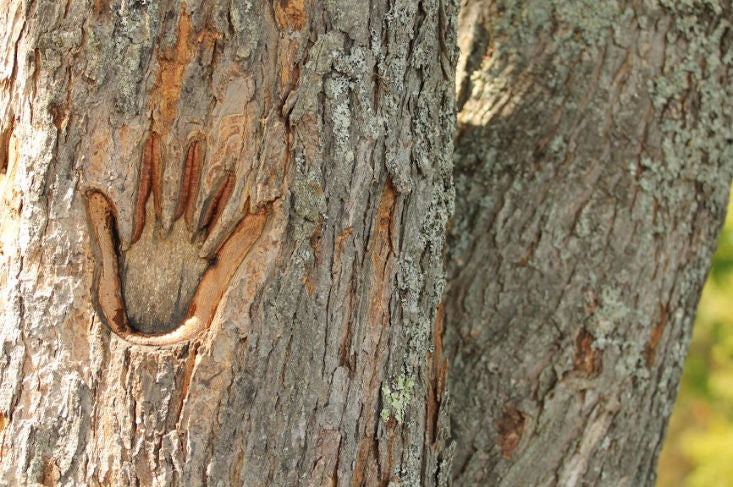
Our Special Relationship with Trees
People and trees have a special relationship and are interdependent - trees release oxygen and take in carbon dioxide while people breathe in oxygen and breathe out carbon dioxide. In addition, people and trees have many things in common - much more than most of us realize! This includes having similar physical characteristics, being comprised mostly of water, and that we both rely on other living things. In addition, the relationship people share with trees has recently become even closer – many people are choosing to have their ashes planted with a Living Urn bio urn and planting system to grow a tree memorial after they pass! With this, there are now thousands and thousands of memory trees throughout the world growing from an urn with human ashes.
What People and Trees Have in Common

Surprisingly to many, people and trees have a lot of things in common. This includes, but is not limited to the following:
- Similar physical characteristics
- Comprised mostly of water
- Uniqueness of every person and tree
- Reliance on other living things
- Communal organisms
Below we describe each of these in more detail:
Similar physical characteristics
Both, trees and people stand upright with limbs branching out from a central trunk. Both also have a crown on top. In addition, the pattern shown by human lungs looks similar to the roots of many trees.
Comprised mostly of water
Both trees and people are made up of mostly water and rely on water for survival. Most trees are at least 50% water and an adult human is about 60% water. Without this precious water resource, life as we know it for both trees and people would not be possible.
Uniqueness
Just as no two people are exactly alike, no two trees are exactly alike. Even if they’re the same type of tree, trees colors can be different, branches and leaves can grow in different ways, and buds and flowers can be present at different places. And, similar to a human fingerprint, a tree ring is unique to each tree.
In addition, and also similar to people, trees grow at different rates and vary in height and width. Some trees are tall while others remain short. Some trees are skinny while others grow wide. The unique features of both trees and people help make the world a more beautiful and interesting place!
Reliance on other living things
People carry trillions of microorganisms on the body which are important for human health and life in general. Similarly, trees also need other living organisms for survival and to reproduce. One example of this is how certain trees rely on fungi to attached to their roots – this allows them to extract a sufficient amount of water from soil. Another example is how many trees, such as the cherry tree, rely on insects to exchange pollen from their blooms to regenerate.
Communal organisms
According to a March 2018 article in Smithsonian, researchers found that trees of the same species are communal organisms (similar to people) and can even develop alliances with trees of other species. This research also discovered that trees in forests have evolved to live in interdependent and cooperative relationships that are sustained by communication and a collective intelligence.
How Trees Help People
People and trees are interdependent - we breathe in oxygen and release carbon dioxide, while trees absorb carbon dioxide and release oxygen. In addition, trees play other critical roles in supporting human life. This includes providing shade, cleaning groundwater, preventing soil erosion, serving as wind breaks, and providing food and medicine.
Spirituality and Trees
The unique relationship between people and trees has been evident throughout history. The symbolism of trees has been recorded over time and across many different cultures. In addition to helping mankind survive with food, shelter, healing, and protection, trees have also played an important role in the spirituality of various religions and groups of people.
The reference to trees exists throughout various religious texts. This includes references to the Tree of Knowledge and Tree of Life in the Bible, the Tree of Immortality in the Quran, the Assyrian Tree of Life in Ancient Mesopotamia, and the Bo or Bodhi Tree in Buddhism, among others. In addition, evidence exists of ancient people in various regions that shows they used the world tree motif symbol – this symbol shows the roots of a tree wrapped around Earth with its branches in the heavens.
Trees and People: The Future
According to a recent Yale University study, there are over 3 trillion trees on earth. However, this number is declining by over 15 billion trees each year and over 45% of the trees that once existed on earth have been destroyed due to human activity. As the tree population continues to decrease, the human population is increasing – there are currently over 7.6 billion people on earth, which is growing at about 80 million people per year.
Many people are aware of this growing issue and are working diligently to preserve and protect trees and ecosystems for our future generations. Organizations such as the Arbor Day Foundation and others have focused their efforts on planting new trees in our precious forests that have been victim to destruction from logging and other human activity, along with recent fires and widespread damage caused by certain insects.
If you want to help, plant trees! You can plant them in your own yard, a friend or family member's yard, or volunteer to plant trees at a local park or other location in your city!


